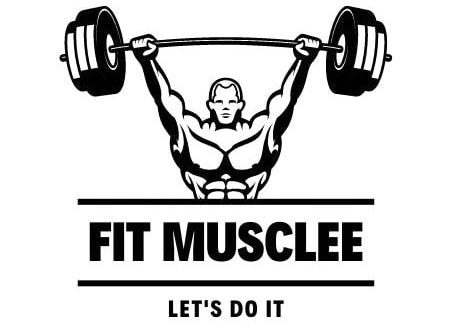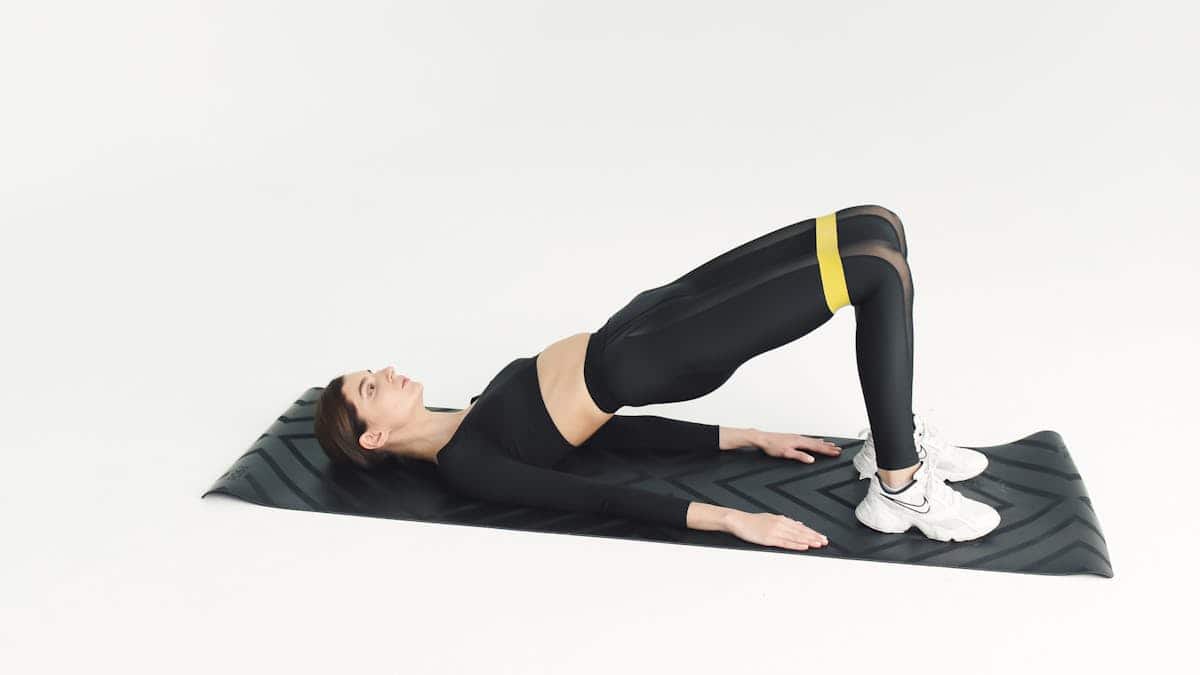Here is your complete guide to calisthenics glutes.
Introduction to Calisthenics Glutes
In the world of fitness, calisthenics glutes have emerged as a powerful method for building strength, flexibility, and endurance using only your body weight. Among the various muscle groups that benefit from calisthenics, the glutes—comprising the gluteus maximus, medius, and minimus—play a crucial role in overall athletic performance and functional movement. In this article, we will explore how calisthenics can effectively target and strengthen your glutes, enhancing not only your physical appearance but also your performance in daily activities and sports.
By focusing on calisthenics glutes, you can achieve impressive results without the need for heavy weights or gym equipment. This guide will cover everything from understanding glute anatomy to crafting a comprehensive workout plan tailored to your fitness level. So, if you’re ready to unlock the potential of your glutes through calisthenics, let’s dive in!
Understanding Glute Anatomy
Muscle Groups Involved
The glutes are made up of three primary muscle groups:
- Gluteus Maximus: The largest and most powerful muscle in the group, responsible for hip extension, outward rotation, and abduction of the thigh.
- Gluteus Medius: Located on the outer surface of the pelvis, this muscle stabilizes the pelvis during walking and running.
- Gluteus Minimus: The smallest of the three, it assists in hip abduction and medial rotation.
Function of Each Muscle Group
Understanding how each muscle group contributes to movement is essential for effective training:
- Gluteus Maximus: Engaged during movements like squats and lunges, it plays a key role in explosive power.
- Gluteus Medius: Critical for stability during single-leg movements; it helps prevent injuries by maintaining proper alignment.
- Gluteus Minimus: Supports hip movements and aids in stabilizing the pelvis.
Importance of Balanced Development
To achieve optimal performance and aesthetics, it’s vital to develop all three glute muscles. Neglecting any part can lead to imbalances that may result in poor posture or injury. A well-rounded calisthenics glutes routine will ensure that all areas are targeted effectively.
Benefits of Calisthenics Glutes
Functional Strength
One of the primary advantages of calisthenics is its emphasis on functional strength. Unlike traditional weightlifting, which often isolates muscles, calisthenics engages multiple muscle groups simultaneously. This holistic approach not only builds strength but also improves coordination and balance.
Injury Prevention
Strong glutes are essential for injury prevention. They support your lower back and knees during various activities. By incorporating calisthenics glutes exercises into your routine, you can strengthen these muscles and reduce the risk of common injuries associated with weak glutes.
Improved Athletic Performance
Whether you’re an athlete or a casual fitness enthusiast, strong glutes can enhance your performance. They play a significant role in explosive movements like sprinting, jumping, and changing direction quickly. By training your glutes with calisthenics, you’ll notice improvements in speed, agility, and overall athleticism.
Essential Calisthenics Glutes Exercises
Here are some key bodyweight exercises that effectively target the glutes:
1. Bodyweight Squats
- Target Area: Gluteus Maximus
- Instructions:
- Stand with feet shoulder-width apart.
- Lower your body by bending at the hips and knees.
- Keep your chest up and back straight.
- Push through your heels to return to standing.
| Exercise | Target Area | Progression Level |
|---|---|---|
| Bodyweight Squats | Gluteus Maximus | Beginner |
2. Lunges: Calisthenics Glutes
- Target Area: All Glute Muscles
- Instructions:
- Forward Lunges:
- Step forward with one leg.
- Lower your hips until both knees are bent at about a 90-degree angle.
- Return to standing and switch legs.
- Reverse Lunges:
- Step back with one leg.
- Lower your hips until both knees form right angles.
- Return to standing.
- Forward Lunges:
| Exercise | Target Area | Progression Level |
|---|---|---|
| Forward Lunges | All Glute Muscles | Intermediate |
| Reverse Lunges | All Glute Muscles | Intermediate |
3. Hip Thrusts: Calisthenics Glutes
- Target Area: Gluteus Maximus
- Instructions:
- Sit on the ground with your upper back against a bench or elevated surface.
- Roll a barbell over your hips (optional).
- Plant your feet flat on the ground shoulder-width apart.
- Push through your heels to lift your hips towards the ceiling.
| Exercise | Target Area | Progression Level |
|---|---|---|
| Hip Thrusts | Gluteus Maximus | Advanced |
4. Step-Ups: Calisthenics Glutes
- Target Area: Gluteus Maximus
- Instructions:
- Stand in front of a sturdy bench or step.
- Place one foot on the step and push through your heel to lift yourself up.
- Step back down and repeat with the other leg.
| Exercise | Target Area | Progression Level |
|---|---|---|
| Step-Ups | Gluteus Maximus | Intermediate |
5. Glute Bridges: Calisthenics Glutes
- Target Area: Gluteus Maximus
- Instructions:
- Lie on your back with knees bent and feet flat on the ground.
- Push through your heels to lift your hips towards the ceiling.
- Squeeze your glutes at the top before lowering back down.
| Exercise | Target Area | Progression Level |
|---|---|---|
| Glute Bridges | Gluteus Maximus | Beginner |
Creating a Calisthenics Glutes Workout Plan
Sample Workout Routine of Calisthenics Glutes
To maximize results from calisthenics glutes training, consider this sample workout routine:
Warm-Up (10 minutes)
- Dynamic stretches targeting glutes (e.g., leg swings, hip circles)
Main Workout (30 minutes)
- Bodyweight Squats: 3 sets of 12–15 reps
- Forward Lunges: 3 sets of 10 reps per leg
- Hip Thrusts: 3 sets of 10–12 reps
- Step-Ups: 3 sets of 10 reps per leg
- Glute Bridges: 3 sets of 15 reps
Cool Down (10 minutes)
- Static stretches focusing on glutes (e.g., seated forward bend, pigeon pose)
How to Adjust Based on Fitness Levels
As you progress, you can modify this routine by:
- Increasing repetitions or sets
- Adding variations (e.g., single-leg versions)
- Incorporating resistance bands or weights as needed
Frequency Recommendations of Calisthenics Glutes
For optimal results:
- Train your glutes at least 2–3 times per week, allowing rest days in between sessions for recovery.
Nutrition for Optimal Glute Development
Macronutrients Overview
To support muscle growth and recovery, focus on a balanced diet rich in macronutrients:
- Protein: Essential for muscle repair; aim for sources like chicken, fish, beans, lentils, and dairy products.
- Healthy Fats: Important for hormone production; include avocados, nuts, seeds, and olive oil.
- Carbohydrates: Provide energy for workouts; choose whole grains, fruits, and vegetables.
Hydration Tips
Staying hydrated is crucial for optimal performance and recovery:
- Aim for at least 8 cups (64 ounces) of water daily.
- Increase intake during intense workouts or hot weather.
Supplements
While whole foods should be your primary source of nutrition:
- Consider protein powder if you struggle to meet protein needs through food alone.
Common Mistakes to Avoid When Training Calisthenics Glutes
When it comes to building strong and well-defined glutes through calisthenics, avoiding common mistakes is crucial for maximizing your results. Here are some key errors to watch out for, along with tips on how to correct them.
1. Incorrect Stance Width
One of the most prevalent mistakes is adopting a stance that is too wide during exercises like squats and deadlifts.
- Optimal Stance: A slightly narrower stance can often be more effective for targeting the glutes. A wider stance may not engage the glute muscles appropriately due to the pivot point of the pelvis.
- Tip: Experiment with foot positioning to find what feels best for your body while still effectively engaging your glutes.
2. Overusing Booty Bands
While resistance bands can be beneficial for teaching movement patterns, excessive reliance on them can hinder your progress.
- Understanding Tension: Using bands in almost every movement might compromise the tension necessary for muscle growth. They can complicate the nervous system’s ability to create proper tension in the glutes.
- Tip: Use bands sparingly and focus on bodyweight exercises or weighted movements that provide adequate resistance for growth.
3. Not Using Enough Load
Many individuals neglect to incorporate sufficient load into their glute training.
- Load is Key: To effectively stimulate muscle growth, it’s essential to include weighted movements like barbell hip thrusts and weighted squats in your routine.
- Tip: Gradually increase the resistance as you become stronger to ensure continuous progress.
4. Neglecting Hip Extension Movements
Failing to prioritize hip extension movements can significantly hinder your glute development.
- Importance of Hip Extension: Exercises such as barbell glute bridges, hip thrusts, and squats are critical for effectively targeting the gluteus maximus.
- Tip: Make these movements a priority in your workout routine to ensure comprehensive glute activation.
5. Poor Exercise Execution
Improper form during exercises can lead to ineffective workouts and potential injuries.
- Common Errors:
- Allowing your knees to extend past your toes during lunges.
- Not engaging your core during glute bridges, which can lead to lower back strain.
- Tip: Focus on maintaining proper form throughout each movement, ensuring that you are engaging the correct muscle groups.
6. Inadequate Glute Activation
Many people fail to activate their glutes properly during workouts, which limits their effectiveness.
- Engagement is Crucial: Simply performing an exercise isn’t enough; you must actively engage and squeeze your glutes at the top of each movement.
- Tip: Before starting your workout, perform glute activation exercises such as clamshells or banded lateral walks to prepare your muscles.
7. Ignoring Nutrition
Diet plays a vital role in muscle growth, yet many overlook its importance.
- Fueling Muscle Growth: Insufficient calorie intake or inadequate protein consumption can impede muscle development.
- Tip: Ensure you’re eating enough calories and protein to support your training goals; consider consulting a nutritionist if needed.
8. Lack of Variety in Exercises
Sticking to the same few exercises can lead to plateaus in progress.
- Variety is Key: Different exercises target various parts of the glutes and help prevent boredom in your routine.
- Tip: Incorporate a range of movements that challenge your glutes from multiple angles, such as single-leg variations or lateral movements.
Common Myths About Calisthenics Glutes Training
Myth 1: “You Can’t Build Muscle with Bodyweight Exercises”
Contrary to popular belief, bodyweight exercises can effectively build muscle when performed correctly with progressive overload techniques.
Myth 2: “Calisthenics is Only for Beginners”
Calisthenics offers endless progression opportunities suitable for all fitness levels—from beginners to advanced athletes—allowing everyone to challenge themselves continuously.
Myth 3: “You Need Weights to Train Your Glutes Effectively”
While weights can enhance resistance training, calisthenics glutes exercises using body weight alone can yield significant strength gains when done consistently.
Read Also: Gluteus Medius Exercise Machine.
FAQs about Calisthenics Glutes
Can I build muscle using only calisthenics?
Yes! With proper technique and progressive overload principles applied over time, you can build significant muscle using only bodyweight exercises.
Read Also: Leg Press and Hack Squat.
How often should I train my glutes?
For optimal results, aim to train your glutes at least 2–3 times per week, allowing adequate rest between sessions.
Read Also: Alternative exercise to hack squat.
Are there any specific diets to follow for better results?
Focus on a balanced diet rich in protein, healthy fats, and carbohydrates while staying hydrated to support muscle growth and recovery.
Read Also: Incline Bench Press Alternative.
Conclusion
Incorporating calisthenics into your fitness routine is an effective way to build stronger glutes while enhancing overall strength and functionality. By understanding glute anatomy, exploring essential exercises, creating a tailored workout plan, focusing on nutrition, debunking myths about bodyweight training—you’re well-equipped to embark on this journey towards improved athletic performance and aesthetics.
Read Also: Foods That Increases Hemoglobin.
Remember that consistency is key! Embrace this holistic approach to fitness through calisthenics glutes training; you’ll not only see physical changes but also feel empowered by newfound strength and confidence in every step you take!
Read Also: Squats or Deadlifts First.

